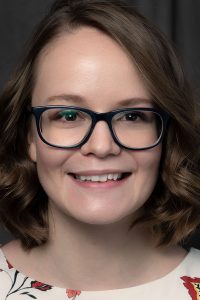This winter, the Salt Lake Valley spent several days with the worst air quality in the nation. Several groups and individuals at the University of Utah are working to educate citizens about it. Among them are Jakob D. Jensen, Associate Dean for Research in the College of Humanities and Kerry E. Kelly, an assistant professor in the chemical engineering department.
In August, Jensen took a test video with a professional grade immersive camera, that records in 360 degrees around the camera. Jensen says that day was a green air day, so the air quality was good. In January, he went back to the same place on a day with bad air quality and took another video. He said, “when we processed both videos in the lab, the difference between the two seemed striking. So we edited them together into this comparative immersive video.”
Jensen, who has extensive expertise in health communications, says the video is “another way of visualizing bad air days in the valley.” He explains, “immersive videos give us another perspective, and perhaps help us to experience how a bad air day feels in some ways. [Those who want to educate about health are] always looking for a visual that reaches new audiences. This technology is one way to do that.”
Although it started as nothing more than a test video, Jensen’s lab is currently planning to do other videos highlighting similar issues.
Instead of helping people to see the bad air quality, Kelly is helping people to measure it—specifically high school students. Alongside fellow professor Tony Butterfield, she’s started a program called AirU that travels to high school science classrooms to teach students about the valley’s air quality. As a part of the discussion, the students build fully functioning air pollution detectors out of computer boards and plastic building blocks such as LEGOs. Kelly and Butterfield then leave air-quality sensors with the students, allowing them to collect pollution data for research while using and maintaining them.
The two anticipate seeing “variations in air quality that depend on distance from roadways, locations to sources [of pollution] and time of day” as they receive data from the sensors.
The idea for the project came because air quality sensors are becoming more available at lower costs and at the same time people are “very interested in air quality”. Electrical and computer engineering students Jonathan Whitaker and Kyle Tingey helped translate their ideas into the working sensors they’re using.
Kelly says the reason they wanted to involve high school students was to help make them into “citizen scientists”.
She explains, “because of our growing population and our topology, this region is likely to continue to experience problems with air quality. The next-generation of decision makers needs to understand the causes of, ways to measure and potential solutions to our air-quality problems.”
Jensen says, “I’m concerned about our air quality and I suspect that most other folks in the valley are too. It’s hard to imagine someone comfortable with the quality of our air.” He continues, “As a father, I worry about the health impact on my two sons. As a resident of Salt Lake City, I’m also worried about the impact on our economy.”
“Utah is a state people visit to enjoy natural beauty. Bad air days can be described in many ways but I doubt anyone thinks of them as beautiful. People want to escape from pollution, not to it.”
@EliseAbril



